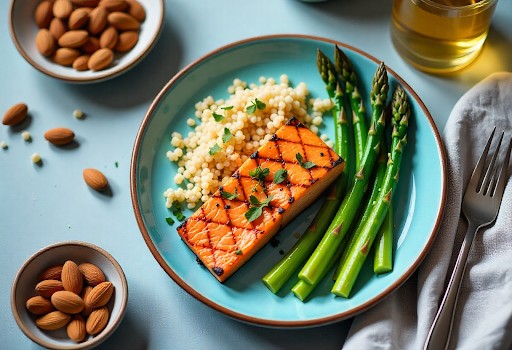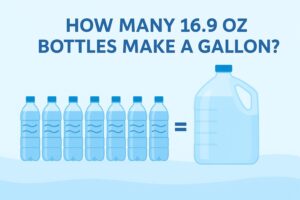
It’s 7 AM, and I’ve just finished my morning workout. I feel energized, focused, and ready to take on the day. But here’s the kicker—by now, most people are probably reaching for a quick breakfast or smoothie. But me? I’m not hungry. I’m fasting. And I’ve been doing it for years.
If you’re new to intermittent fasting or you’ve heard the hype but aren’t sure what it’s all about, don’t worry—I’ve got you covered.
Intermittent fasting (IF) has transformed the way I approach fat loss, energy management, and even mental clarity. And the best part? It’s not about what you eat, but when you eat.
In this post, I’m going to walk you through what intermittent fasting is, how it works, and how it can help you achieve your fitness and fat loss goals. So, let’s get into it.
What Is Intermittent Fasting, and How Does It Work?

Intermittent fasting is a dietary approach where you cycle between periods of eating and fasting. Unlike traditional dieting, which focuses on what you eat, IF focuses on when you eat. It’s a simple concept: you eat within a specific window of time and fast for the rest of the day.
The most common method? The 16:8 rule—where you fast for 16 hours and eat during an 8-hour window. So, for example, you might eat from noon until 8 PM and fast from 8 PM to noon the next day. That’s it. Just a matter of timing your meals.
The reason this works for fat loss is pretty straightforward: when you fast, your body starts to rely on stored fat for energy instead of the food you’ve just eaten. This leads to fat burning and, ultimately, weight loss. Plus, during the fasting period, your body goes into repair mode—boosting things like your metabolism, insulin sensitivity, and growth hormone levels.
Why Is Intermittent Fasting So Effective for Fat Loss?
When I first started intermittent fasting, I didn’t realize just how powerful it would be for fat loss. But after a few months, the results spoke for themselves. Here’s why it works so well:
- Increased Fat Burning: When you’re fasting, your body switches from burning sugar (glucose) to burning fat for energy. This helps to reduce fat stores over time.
- Improved Insulin Sensitivity: Fasting helps lower insulin levels, which not only promotes fat loss but also protects against insulin resistance and diabetes.
- Enhanced Growth Hormone Production: When you fast, your body produces more growth hormone, which helps with muscle building and fat loss.
- Caloric Deficit: It’s simple math—by restricting your eating window, you’re naturally inclined to eat fewer meals. This can help create a caloric deficit without the need to count every calorie or obsess over food.
- Better Mental Clarity: One of my favorite benefits of intermittent fasting is the mental clarity it provides. During the fasting phase, your body isn’t distracted by digesting food, so your focus and energy are heightened.
Also Read: Nutrition Hierarchy
How to Start Intermittent Fasting: A Step-by-Step Guide
Now that you understand the “why” behind intermittent fasting, let’s talk about how to implement it in your life. It’s easy to get started, and I’ll break it down into manageable steps:
1. Choose Your Fasting Window
The 16:8 method is the most common, but you can experiment with different schedules depending on your lifestyle. Some people prefer 14:10 (14 hours fasting, 10 hours eating) or even 18:6 (18 hours fasting, 6 hours eating). Find what works best for you.
2. Start Slow
If you’re new to fasting, don’t jump straight into a 16-hour fast. Start with 12 hours (like 8 PM to 8 AM) and gradually increase your fasting window. Your body will adjust over time.
3. Eat Nutrient-Dense Meals
When it’s time to eat, focus on whole, nutrient-dense meals. Include lean proteins, healthy fats, and plenty of veggies. Avoid processed foods and sugars, which can spike insulin levels and interfere with fat burning.
4. Stay Hydrated
During the fasting window, it’s important to stay hydrated. Drink water, herbal teas, or black coffee to keep yourself energized and curb hunger.
5. Listen to Your Body
Intermittent fasting is flexible, and it’s essential to listen to your body’s signals. If you’re feeling excessively hungry or fatigued, don’t force it. You can always shorten your fasting window or adjust your meals.

Can Intermittent Fasting Help with Muscle Retention?
One common concern people have about intermittent fasting is that it will lead to muscle loss. The good news? If you’re doing it right, intermittent fasting won’t hinder muscle retention—in fact, it can actually help. Here’s how:
- Protein Intake: Make sure you’re hitting your protein goals during your eating window. This will help maintain muscle mass.
- Resistance Training: Continue lifting weights or doing resistance exercises during your fasting period to stimulate muscle growth.
- Growth Hormones: As I mentioned earlier, intermittent fasting increases growth hormone production, which is essential for muscle retention.
By combining intermittent fasting with a proper strength training routine, you can lose fat while preserving, or even gaining, muscle.
FAQ: Intermittent Fasting
1. How do I get started with intermittent fasting?
Start slow with a 12-hour fasting window (e.g., 8 PM to 8 AM) and gradually increase the fasting period to 16 hours. Make sure you’re eating nutritious meals during your eating window to stay energized.
2. Will I feel hungry during the fast?
At first, you might feel some hunger, but it gets easier over time as your body adjusts. Drinking water, herbal teas, or black coffee can help curb hunger during the fasting period.
3. Can I drink coffee while fasting?
Yes! Black coffee is allowed during the fasting window. It’s calorie-free and can help suppress appetite. Just make sure to avoid creamers or sugar.
4. Can I exercise while fasting?
Absolutely. In fact, exercising while fasting can increase fat burning. However, listen to your body, especially when you’re starting out. You might prefer lighter exercise, like walking or yoga, during your fasting window.
The Bottom Line: Fasting for Fat Loss and Health
Intermittent fasting isn’t just a diet trend; it’s a powerful tool that can help you burn fat, increase energy, and improve mental clarity—all while keeping your muscle intact. By choosing a fasting window that works for you, sticking to nutrient-dense meals, and staying hydrated, you’ll be on your way to better health and a leaner physique.
It’s not about restriction—it’s about giving your body the time it needs to do its job: burning fat, repairing muscle, and improving overall wellness. So, if you’re ready to take control of your health and fitness, give intermittent fasting a try. Stick with it, be patient, and enjoy the journey. Your body (and mind) will thank you.


